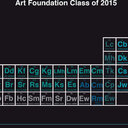Neuronal and glial marker proteins in encephalopathy associated with acute liver failure and acute hyperammonemia in the rabbit.
Schlüsselwörter
Abstrakt
Neuronal and glial cell marker proteins were quantified in order to evaluate the possibility of increased proteolysis in the brain of rabbits with acute liver failure and acute hyperammonemia. Acute liver failure was induced by a two-stage devascularization procedure. Acute hyperammonemia was induced by a prolonged infusion of ammonium acetate, which simulates the plasma ammonia level in acute liver failure. Control animals received an infusion of sodium/potassium acetate. After development of severe encephalopathy, the animals were sacrificed (13.7 +/- 1.3 hours for rabbits with acute liver failure and 20.2 +/- 0.8 hours for rabbits with hyperammonemia) (x +/- S.E.M./n = 6) and their brains were dissected into cerebral cortex, hippocampus, cerebellum and brain stem. The total protein content and the concentrations of the neuronal cell marker proteins NSE (neuron specific enolase), NF68 and NF200 (68 kD and 200 kD neurofilament polypeptides) and the glial cell marker proteins GFAP (glial fibrillary acidic protein) and S-100 were determined. Total protein content was decreased in the brain stem in acute hyperammonemia only. The content of neuronal and glial cell markers was not affected in either of the two conditions. However, low molecular weight proteolytic fragments of the NF 68 kD polypeptide were observed in the hippocampus of three out of six animals in both experimental groups. No proteolytic degradation of GFAP was observed. The results show that, in experimental encephalopathy due to acute liver failure and acute hyperammonemia, no major changes occur in the marker proteins. The finding of proteolytic fragments of the NF68 polypeptide indicates that the neuronal population is affected prior to glial alterations. These findings are in agreement with the concept that acute hepatic encephalopathy is reversible and induces only slight structural changes.



